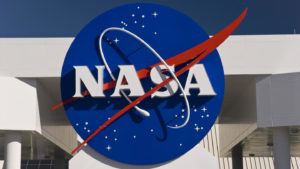NASA is noticing a massive asteroid approaching the Earth’s orbit on Saturday, April 18. According to the NASA observations, the approaching asteroid is bigger than the Great Pyramid of Giza in Egypt.
Speed of Asteroid
NASA’s Center for Near-Earth Object Studies (CNEOS) noticed the approaching asteroid. According to them, the asteroid is currently moving in the Solar System at very high speed of over 44,000 miles per hour.
Size of Asteroid
CNEOS observed that the asteroid is about 492 feet wide. Given its size, 2020 FV6 is significantly taller than the Statue of Liberty. Asteroids that are as big as 2020 FV6 can easily cause an impact event on Earth if they collide with the planet.
Impacts of Asteroid collision
Asteroids that are large and moving at a very high speed can reach the ground and cause a powerful impact, instead of burning up and exploding in the atmosphere.
Based on the overall size and speed of the asteroid, the blast from the collision can destroy large areas such as entire cities.
If these big asteroids hit the ocean instead, they will result in towering tsunamis.
NASA observed an Asteroid
An asteroid is first observed on March 29. In the observation, NASA came to know that it follows a very wide orbit around the Sun. According to the agency, 2020 FV6’s trajectory can sometimes take the asteroid near the orbit of Jupiter.
Apollo Asteroid
As the planet completes its cycle around the Sun, the asteroid intersects the path of Earth. Due to its Earth-crossing trajectory, 2020 FV6 has been labelled by NASA as an Apollo asteroid.

The asteroid is known to intersect Earth’s path
Asteroid will approach the Earth’s orbit
According to CNEOS, the approaching asteroid will intersect the Earth’s path on April 19 at 8:29 a.m. EDT. As the asteroid will approach earth, it will completely miss Earth by a distance of 0.02761 astronomical units or around 2.6 million miles away.
According to NASA’s diagram, 2020 FV6 is not expected to return to Earth’s path until Sept. 15, 2037. During this time, the space rock will fly past Earth from a distance of about 0.05500 astronomical units, which is equivalent to around 5.1 million miles away.

Artist illustration of an asteroid heading for the Earth
About NASA
According to Wikipedia
- Founded: 29 July 1958, United States
- The National Aeronautics and Space Administration is an independent agency of the United States Federal Government responsible for the civilian space program, as well as aeronautics and aerospace research. NASA established in 1958, succeeding the National Advisory Committee for Aeronautics.
- Headquarters: Washington, D.C., United States
- Founder: Dwight D. Eisenhower





